Top 10 Largest Temples Around The World of All Time
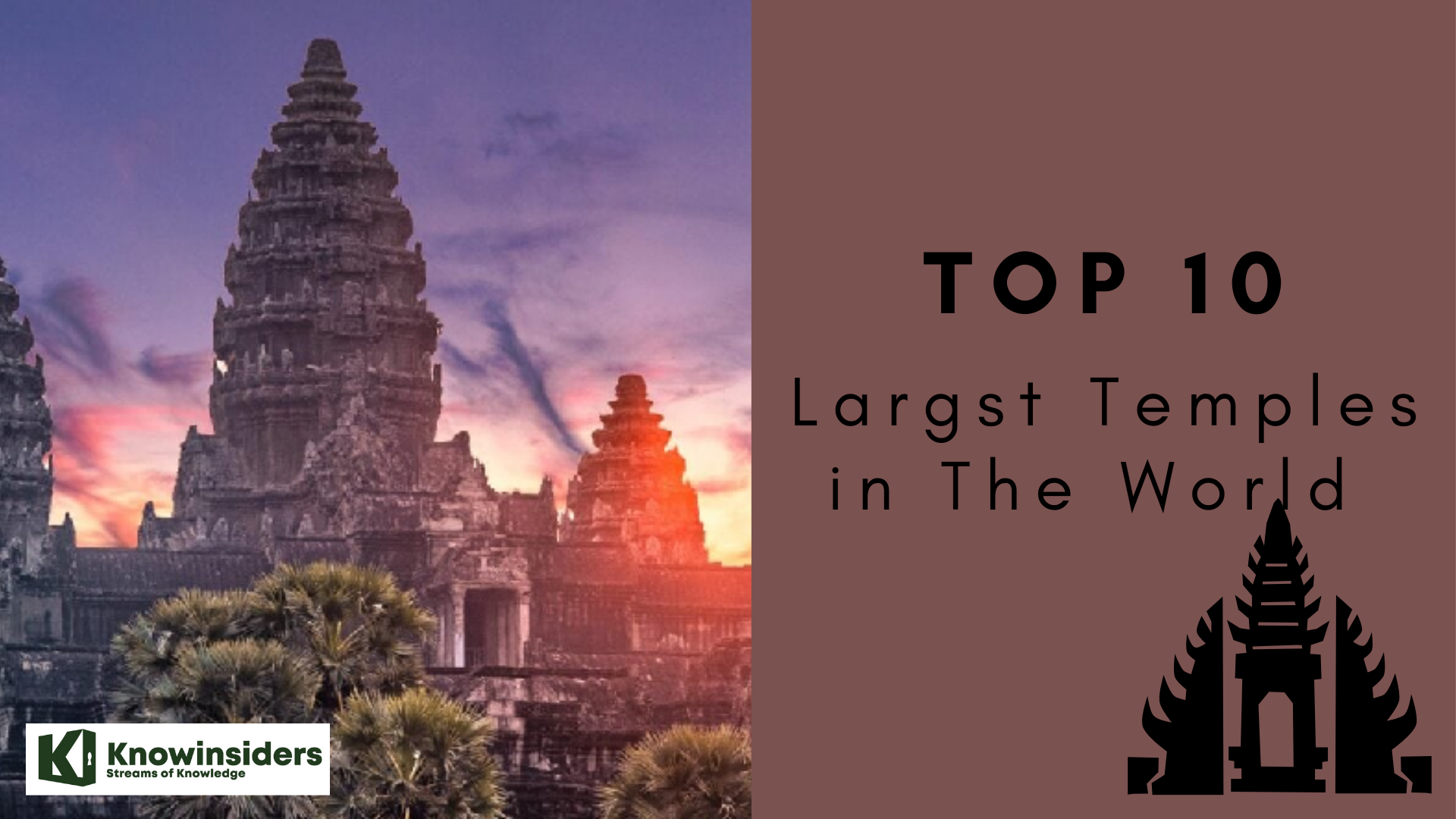 |
| Top 10 largest temples in the world |
The spiritual world has always been a part of spiritual life in every country in the world. With adoration and gratitude to their gods, each country tries to build for itself the most sacred place of worship with the most unique architecture.
Enlightenment is the primary goal of every Hindu temple. Architectural styles, towering gopuras, magnificent sculptures, paintings, carvings and decorations of world famous temples are truly a feast to the eyes.
Here the list of top 10 largest Hindu temples in the world, ranked by Knowinsiders.com (lastest update: Feb.2023).
What are the Largest Temples in the World?
10. Vaitheeswaran Koil, Tamil Nadu, India
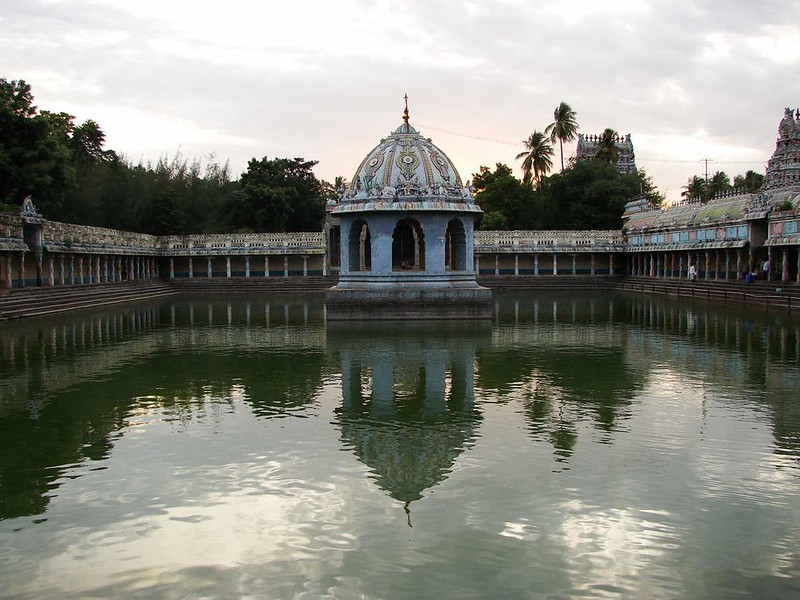 |
| Photo: Hinduism |
In Tamil Nadu, Vaitheeswaran Kovil is a Shiva temple. Prayers to Shiva as Vaidyanathar or Vaitheeswaran, the "God of healing," are believed to cure diseases. Tamil vaidya (Doctor) and Ishvara (God/Master) form vaitheeswaran. Sri vaidyanathan faces west, while the common side is east. Healing God. "Vaideeswaran" in Tamil. Mars is one of the nine Navagraha temples (Angaraka).
The village is known for Tamil Naadi palm leaf astrology. 7 km from Sirkazhi, 235 km from Chennai, 27 km from Chidambaram, 110 km from Thanjavur, and 16 km from Mayiladuthurai.
A holy dip in the temple's Siddhamirtham tank's nectar-filled waters is said to cure all diseases.
The temple is a Paadal Petra Sthalam and revered by 7th-century Saiva nayanars' Tevaram hymns (temple revered by the nayanars).
Sirkali-Mayiladuthurai State Highway passes by the temple. Tamil Nadu government buses run frequently. Chennai-Mayiladuthurai railway has a station. Nearest proposal airport is Karaikal, 40 km from temple. The temple has large precincts, a five-tiered gopuram, and two inner gopurams. The innermost sanctum houses Vaitheeswaran's lingam. The Muthukumara Swamy metal image of Subramanya is in the first precinct around the sanctum.
Nataraja, Somaskanda, Angaraka, Durga, Dakshinamoorthy, Surya, Jatayu, and Sampati are the other metal and stone images in the sanctum. Thaiyalnayaki is depicted standing with medicinal oil in the second precinct facing south. Dhanvantari and Angaraka have small stone sculpture shrines in the large precinct. The Thaiyalnayaki shrine faces this precinct's southern gateway to the temple tank.
Near the eastern gateway is the Sthala Vriksha (temple tree), a margosa (Azadirachta indica, neem tree) with medicinal properties. The Adi (original) temple shrine has a smaller replica of the main shrines at the eastern gateway. The temple has a beautiful Gangavisarjanar metal image. Mars' shrine is near the third precinct's Eastern gateway.
9. Meenakshi Amman Temple, India
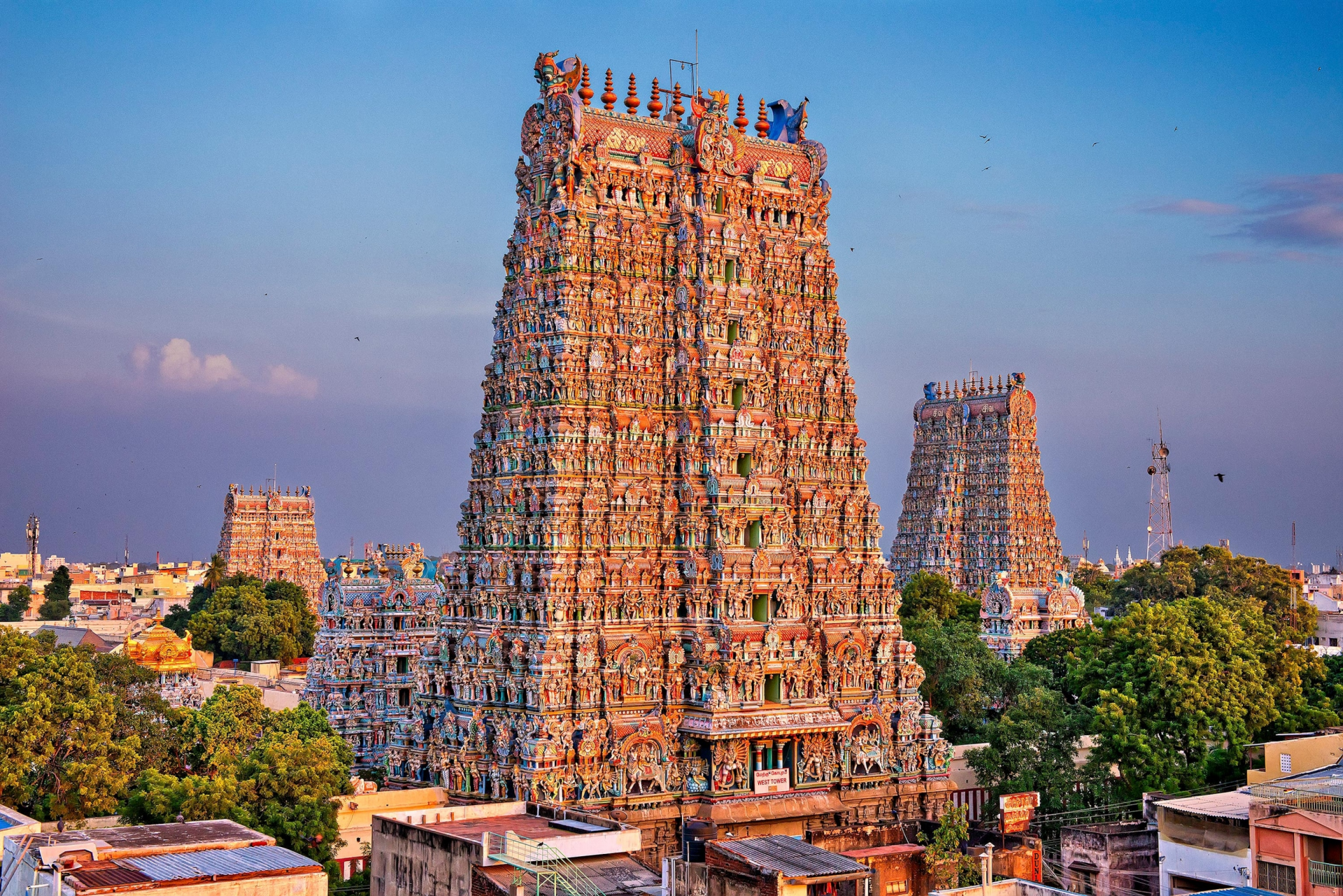 |
| Meenakshi Amman Temple - Photo: National Geographic |
Madurai's historic Hindu temple, Arulmigu Meenakshi Sundareshwarar Temple, is on the southern bank of the Vaigai River. It honors Parvati's daughter Meenakshi and Shiva's consort Sundareshwar. The goddess temple in 6th-century CE Tamil Sangam literature is at the center of the ancient temple city of Madurai. Paadal Petra Sthalam includes this temple. Tamil Saiva Nayanars of the 6th-9th century CE revered 275 Shiva temples in Paadal Petra sthalam.
The Tamil Nadu State Emblem is based on the temple's west gopuram.
The Meenakshi temple is a kilometer south of the Vaigai River in Madurai's historic center. 460 km (290 mi) southwest of Chennai, the state capital. The temple is near a major railway junction, a daily-service airport, and four-lane National Highway 38. The city's major ring roads radiate from the temple complex, following Silpa Sastra's city design guidelines. Madurai is one of many temple towns in the state named after the groves, clusters, or forests dominated by a particular tree or shrub and the same variety sheltering the presiding deity. Kadambavanam is thought to have been a forest.
Unlike South Indian Shiva temples where Shiva is the main deity. According to the Tamil text Tiruvilaiyatarpuranam, king Malayadwaja Pandya and his wife Kanchanamalai performed a Yajna to have a son for succession. Instead, the fire births a three-year-old daughter with three breasts. Shiva says the parents should treat her like a son, and she will lose the third breast when she marries.
Advice is followed. The girl grows up, the king crowns her successor, and when she meets Shiva, his words come true and she becomes Meenakshi. According to Harman, this may reflect South India's matrilineal traditions and the belief that "penultimate [spiritual] powers rest with the women," gods listen to their spouses, and kingdoms' fates rest with women. Susan Bayly says that Dravidian Hindu society, where "woman is the lynchpin of the system," reveres Meenakshi.
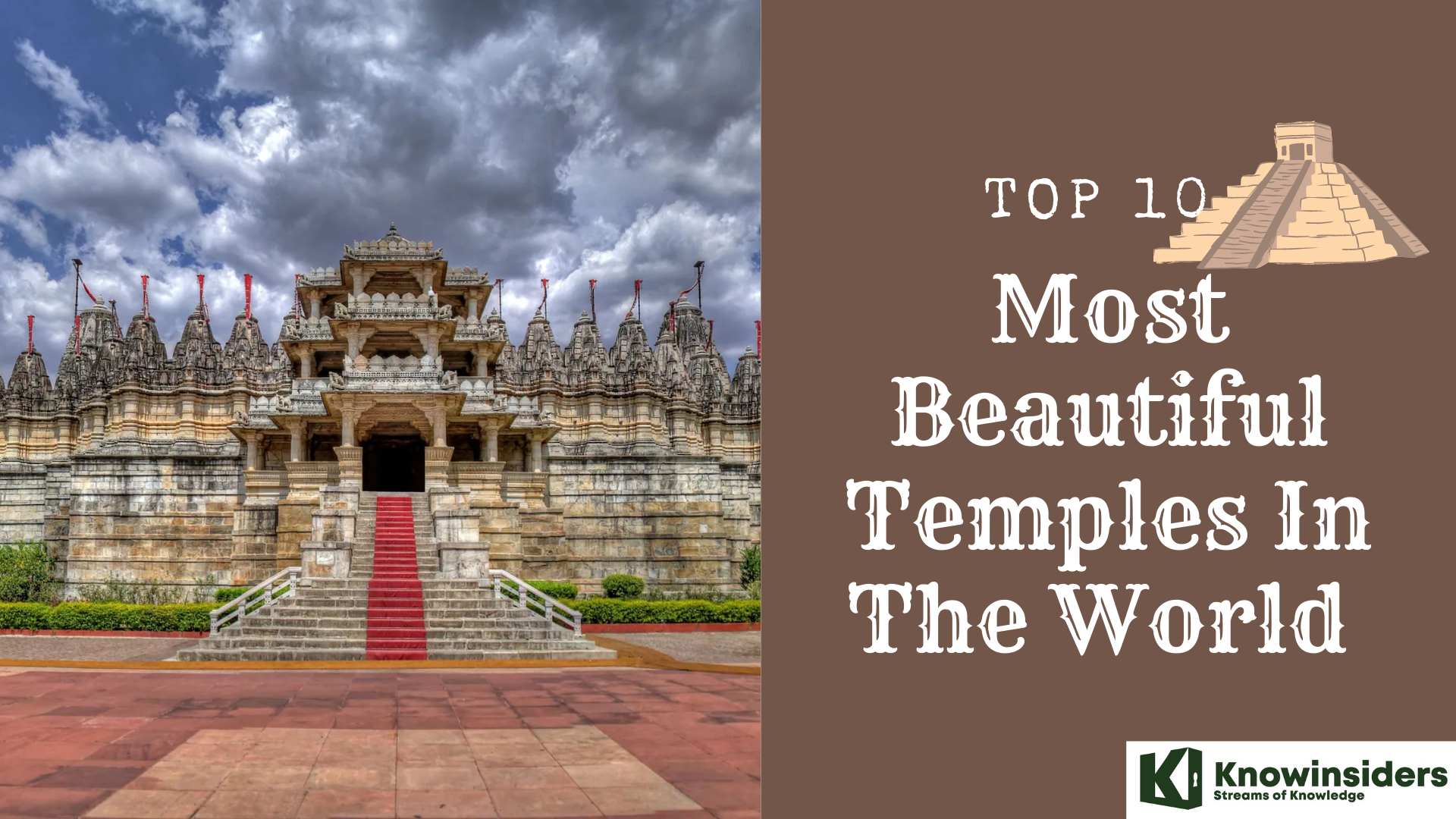 Top 10 Most Beautiful Temples in The World Top 10 Most Beautiful Temples in The World Check out this top 10 most beautiful temples in the world that you can pay a visit in the future in the article below. |
8. Jambukeswarar Temple, India
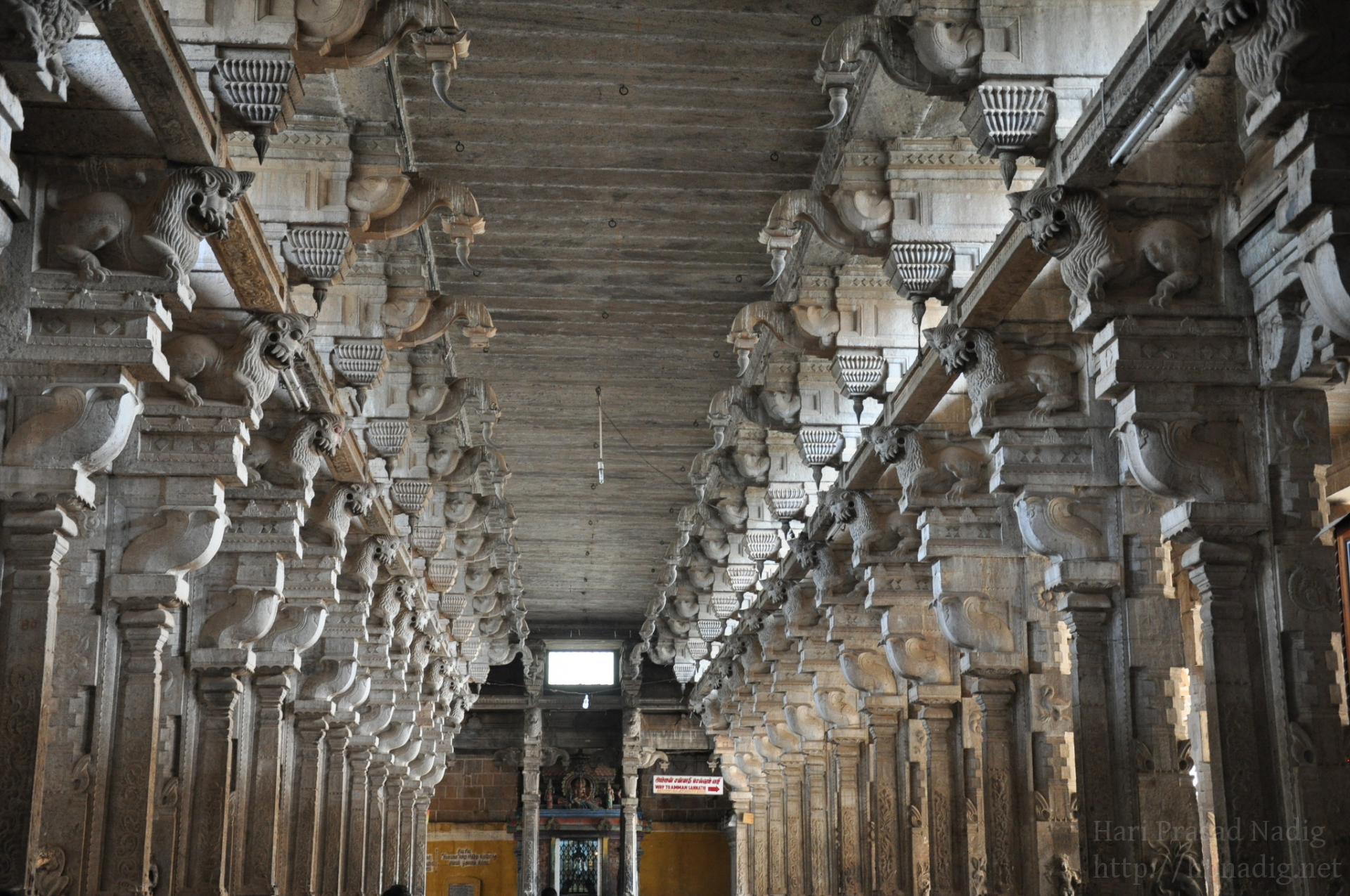 |
| Jambukeswarar Temple - Photo: Wikimedia Commons |
Jambukeswarar Temple, Thiruvanaikaval (also Thiruvanaikal, Jambukeswaram), is a famous Shiva temple in Tiruchirapalli (Trichy), Tamil Nadu, India. Kocengannan (Kochengat Cholan), an Early Chola, built this temple. The Ranganathaswamy temple is on Srirangam island.
Thiruvanaikal is one of Tamil Nadu's five major Shiva temples (Pancha Bhoota Stalam), representing water (neer). Jambukeswara's sanctum is filled with water from an underground stream despite pumping.
The four most revered Nayanars (Saivite Saints) have sung the deity's praises in this temple, one of the 275 Paadal Petra Sthalams. Temple inscriptions are Chola.
Fergusson says the temple outshines the Srirangam Ranganathaswamy temple, which was built at the same time. Temples have five enclosures. The Vibudi Prakara outer wall of the fifth precinct is over a mile long, two feet thick, and over 25 feet high. Shiva and laborers supposedly built the wall. The fourth precinct's 2436-by-1493 hall has 796 pillars. It has a spring-fed tank. The third enclosure is 745 by 197 with a 30-foot wall. A coconut thoppu, 73- and 100-foot gopurams, and a small water tank are in this area. The second enclosure has a 65-foot gopuram, several small shrines, and a 306-by-197-foot area. The sanctum is 126 by 123 feet.
7. Ekambareswarar Temple
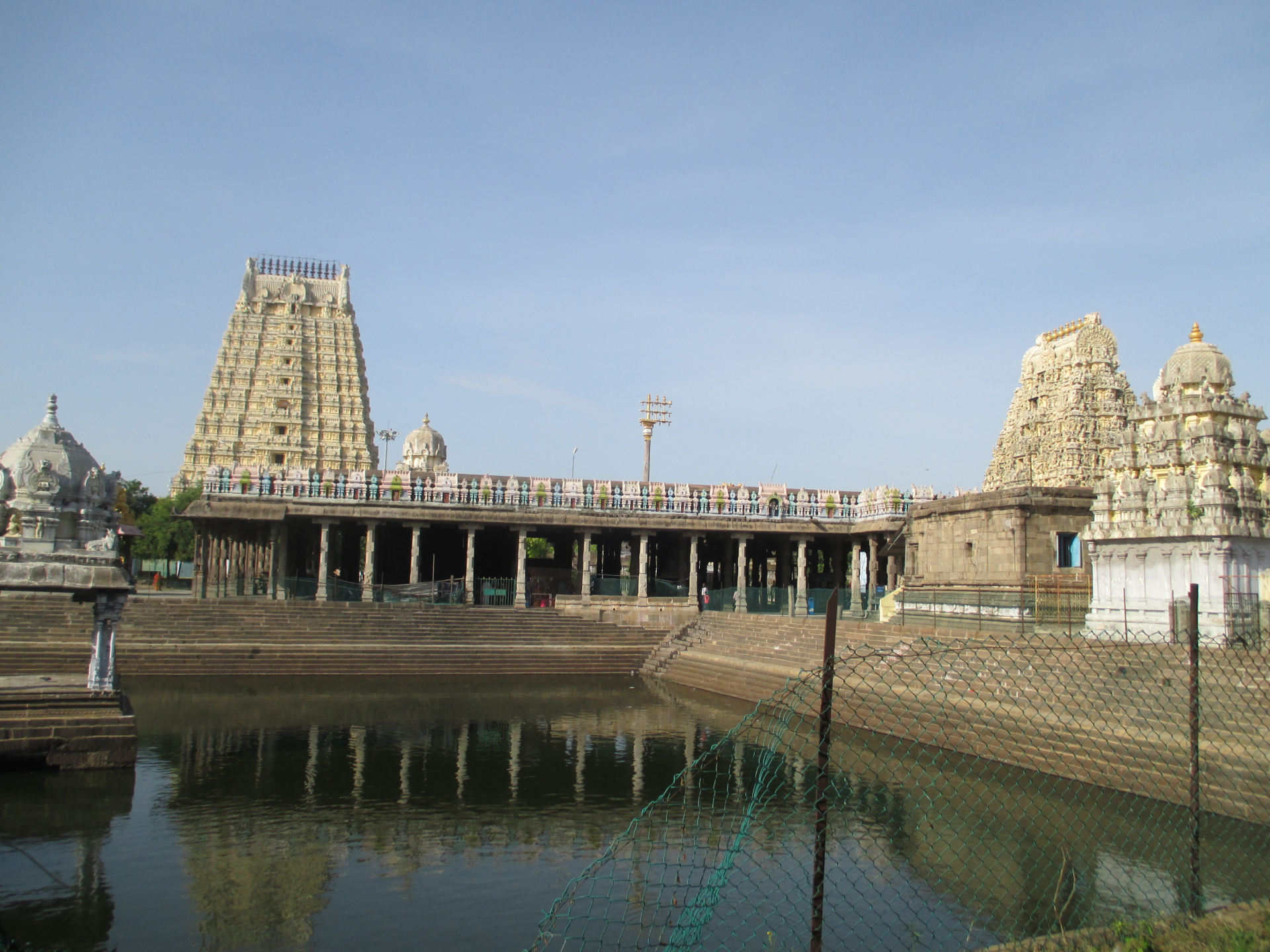 |
| Ekambareswarar Temple - Photo: Wikipedia |
Ekambareswarar Temple is one of the "Pancha Bhoota Stalam"—five Shiva temples signifying five components of life—and one of the holiest. It's Earth.
Ekambareswarar is Shiva. The Pallavas rebuilt the temple approximately 600 AD. Nonetheless, the temple exhibits artwork from most Kanchipuram dynasties. The Vijayanagara Empire's 172-foot Raja Gopuram is stunning. The Cholas also built the temple.
According to mythology, Goddess Parvati made and revered the Ekambareswarar Temple's lingam, which still bears her mark. Goddess Parvati covered Shiva's eyes and darkness fell. Shiva's closed eyes darkened the Sun and Moon completely. His third eye saved humanity. After seeing this, Parvati felt guilty. Shiva requested penance to cleanse her karma. Kamakshi, Parvati's earthly form, began penance. She created a sand Shiva linga and worshipped Lord Shiva as Prithvi Lingam under an antique temple mango tree. Shiva unleashed a flood when Kamakshi worshipped him to test her devotion.
Kamakshi fears the river would wash away the Prithvi Lingam and embraces it. Lord Shiva, who actually melted owing to her devotion and love, manifested and married Kamakshi. Kamakshi's bangles and kuchas accidentally left traces on the sand-made lingam, which may still be seen today.
The temple's renowned "Sthala Vriksham" mango tree, under which Kamakshi worshipped the Shiv Lingam, is about 3500 years old. Each branch represents a Vedic scripture and produces four fruit flavors.
The temple also has the "Aayiram Kaal Mandapam" or 1000-pillared hall, 1008 Shiv Lingams on the inner walls, and ten musical pillars in the inner corridor. Another architectural marvel is that the sun shines directly on the Shiva linga every 19, 20, and 21 of the Panguni month (March-April), when the Ekambareswarar Temple celebrates its most important festival, the Panguni Uthiram.
6. Annamalaiyar Temple, India
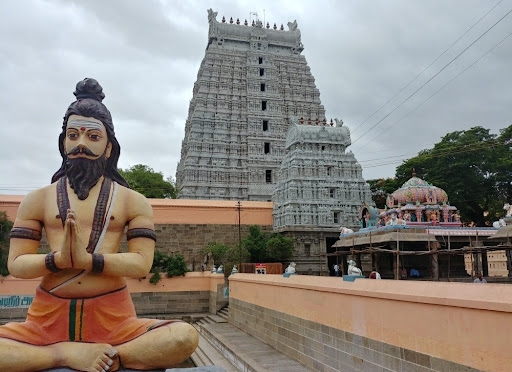 |
| Annamalaiyar Temple - Photo: Wikipedia |
Arunachalesvara Temple, also known as Annamalaiyar Temple, is a Hindu shrine to the god Shiva that is situated at the foot of Arunachala Hill in the Indian Tamil Nadu town of Thiruvannamalai. As one of the temples connected to the five elements, the Pancha Bhoota Stalas, and particularly the fire element, or Agni, is vital to the Hindu faith of Shaivism.
The lingam, which serves as a representation of Shiva and serves as his idol, is known as the Agni lingam. Shiva is adored as Arunachalesvara or Annamalaiyar. Parvati, his wife, is portrayed as Unnamalai Amman. The Tevaram, a work by Tamil saint poets known as nayanars and categorized as Paadal Petra Sthalam, and a canonical work of the Tamil Saiva religion from the seventh century, reveres the presiding deity. The Tiruvempaavai was written here by Saiva saint poet Manikkavasagar in the ninth century.
One of India's greatest temple complexes, it is 10 hectares in size. It has four gopurams, or gateway towers. The eastern tower, which has 11 storeys and a height of 66 meters (217 feet), is the tallest; it was constructed by Sevappa Nayakkar and is one of the tallest temple towers in India (Nayakar dynasty). The most notable shrines in the temple are those of Arunachalesvara and Unnamalai Amman. The thousand-pillared hall, which was constructed during the Vijayanagar era, is the most remarkable of the several halls in the temple complex.
The current masonry edifice was constructed in the ninth century by the Chola dynasty, and further additions are credited to the Vijayanagara kings of the Saluva, Tuluva, and Sangama dynasties (1336–1485 CE) (1491–1570 CE). The Hindu Religious and Charitable Endowments Department of the Government of Tamil Nadu looks over and manages the temple.
The temple contains six daily rituals that take place between 5:30 a.m. and 10 p.m., as well as twelve annual festivals. Throughout November and December, on the day of the full moon, the Karthigai Deepam festival is observed, and a sizable beacon is lit atop the hill. It is clearly visible from a great distance and represents the Shiva lingam of fire merging the sky. Three million pilgrims attend the ceremony to witness it. One million pilgrims circumnavigate the foot of the temple and the Arunachala hills on the day before every full moon as part of a ritual called Girivalam.
5. Belur Math, India
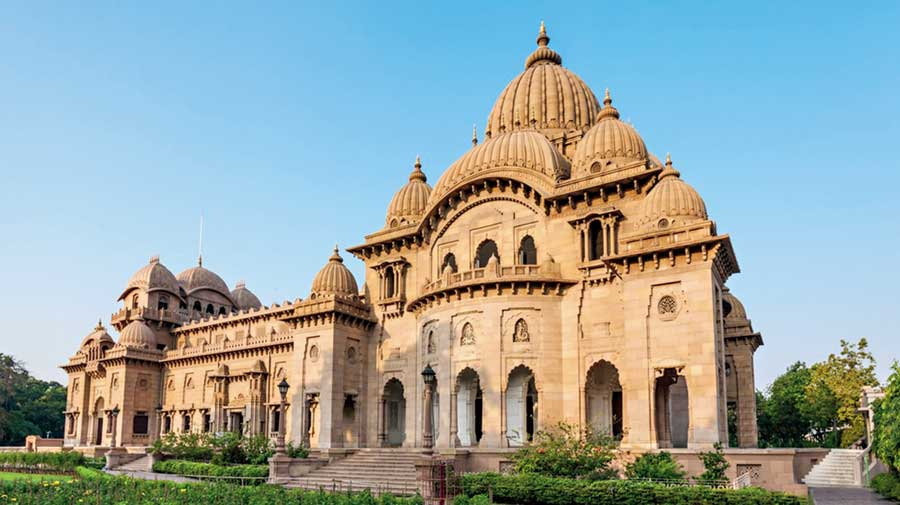 |
| Belur Math - Photo: Telegraph India |
Swami Vivekananda established the Belur math as the international headquarters of the Ramakrishna mission in 1897. The most intriguing aspect of Belur math is that it resembles a temple, church, or mosque from every vantage point. The temple's architecture is a synthesis of Hindu, Islamic, Buddhist, Rajput, and Christian styles. Additionally, Belur mathematics is regarded as a symbol of global religious harmony.
Swami Vivekananda said on the occasion of laying the cornerstone of Belur Math in 1898, "The spiritual light that this place will emit will permeate the entire universe." The entire Belur math complex occupies an expansive 40 acres.
The Belur Math complex includes temples dedicated to Sri Ramakrishna, Swami Vivekananda, and Sri Sarada Devi, the Holy Mother. The main entrance to the temple is adorned with symbols from various religions. The museum of the Belur math also contains Sri Ramkrisha and Swami Vivekananda's personal belongings.
4. Thillai Nadaraja Temple, India
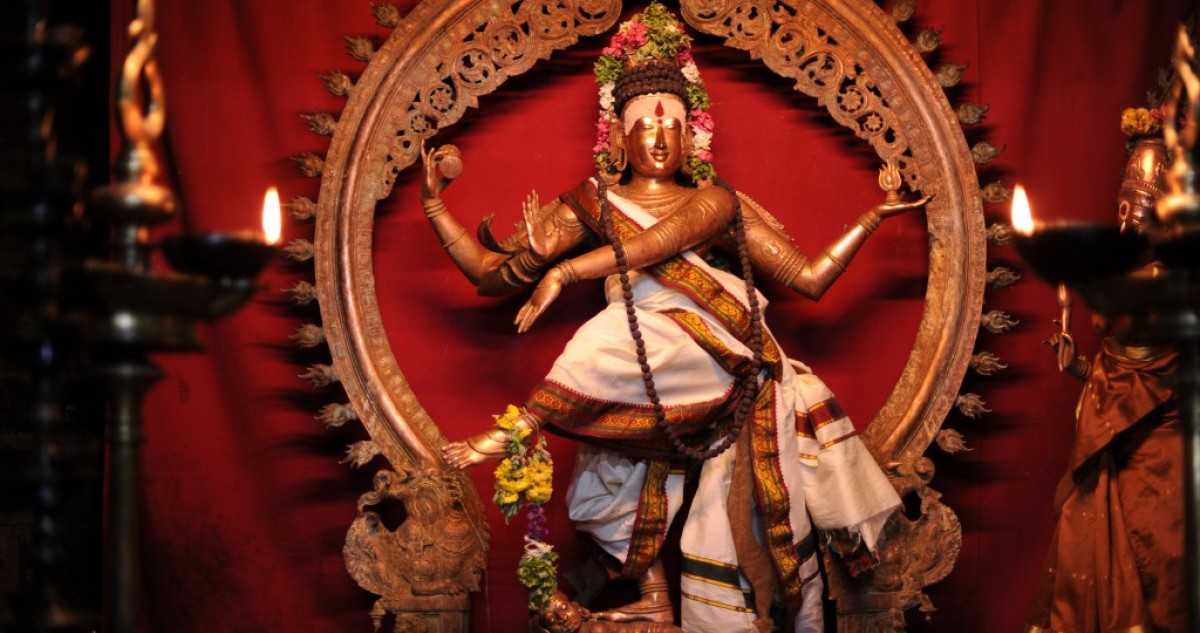 |
| Thillai Nadaraja Temple - Photo: Pragyata |
Nataraja Temple, also referred to as the Chidambaram Nataraja temple or Thillai Nataraja temple, is a Hindu temple dedicated to Nataraja – Shiva as the lord of dance – in Chidambaram, Tamil Nadu, India. The temple has ancient roots and a Shiva shrine existed at the site when the town was known as Thillai. Chidambaram, the name of the city and the temple, literally means "atmosphere of wisdom" or "clothed in thought." The temple architecture represents the relationship between the arts and spirituality, creative activity and the divine. The temple wall carvings depict all 108 karanas from Bharata Muni's Natya Shastra; these postures are the basis of Bharatanatyam, the classical Indian dance.
In the 10th century, when Chidambaram was the capital of the Chola dynasty, the present temple was constructed, making it one of the oldest surviving active temple complexes in South India. Following its consecration in the 10th century by the Cholas, who regarded Nataraja as their family deity, the temple has been damaged, repaired, renovated, and expanded throughout the second millennium. Plan, architecture, and structure of the temple date to the late 12th and early 13th centuries, with later additions in a similar style. Although Shiva as Nataraja is the temple's primary deity, it reverently presents major themes from Shaktism, Vaishnavism, and other Hindu traditions. The Chidambaram temple complex, for instance, contains the earliest known Amman or Devi temple in South India, a pre-13th-century Surya shrine with chariot, shrines for Ganesha, Murugan, and Vishnu, one of the earliest known Shiva Ganga sacred pools, and large mandapas for the convenience of pilgrims (choultry, ambalam, or sabha). In the golden hall of the Pon Ambalam shrine, Shiva is portrayed as the Nataraja dancing the Ananda Tandava ("Dance of Delight").
The temple is one of the five elemental lingas in the Shaivism pilgrimage tradition and is regarded as the most refined of all Shiva temples (Kovil) in Hinduism. It is also a venue for performing arts, such as the annual Natyanjali dance festival held on Maha Shivaratri.
3. Akshardham, India
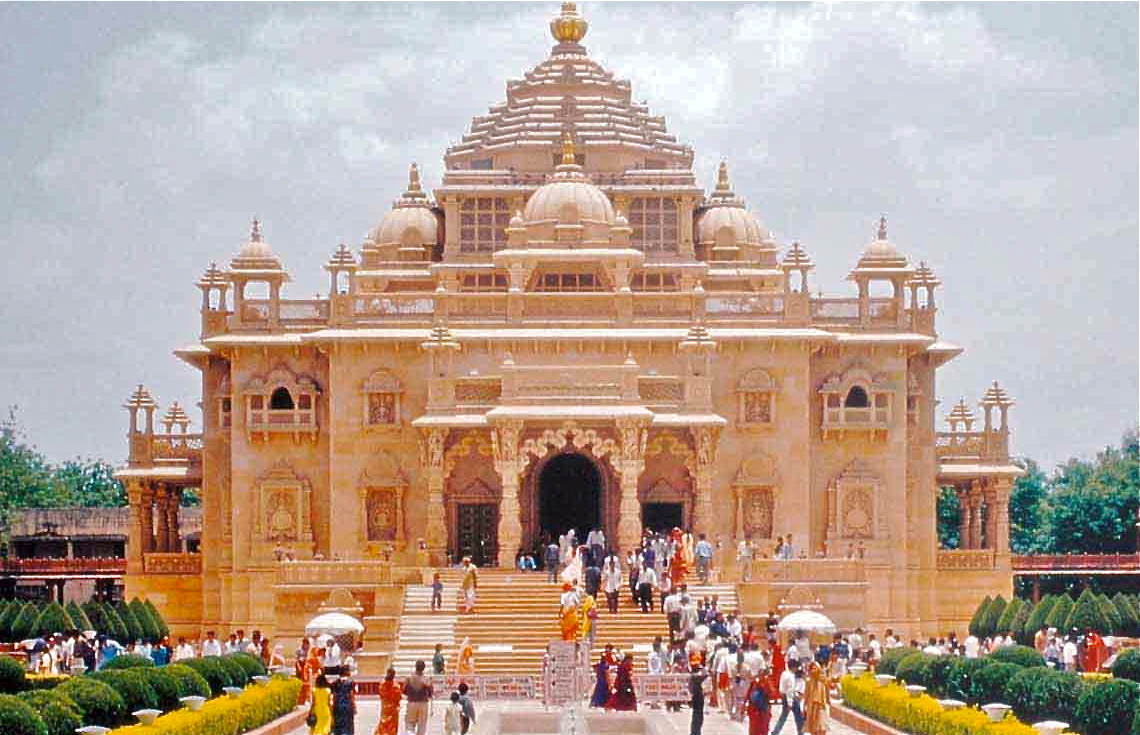 |
| Akshardham - Photo: Wikipedia |
In Delhi, the expansive Akshardham Hindu temple complex is situated on the banks of the Yamuna river. The temple grounds covered an area of 100 acres. It is regarded as a symbol of Hindu culture, spirituality, and art. This religious complex's central section contains murtis of Sita Ram, Siv Parvati, Radha Krishna, and Lakshmi Narayanan.
The spiritual leader of the BAPS organization, Pramukh Swami Maharaj, commissioned the construction of the Akshardham temple complex.
The entire structure of the Akshardham temple is made of sandstone and marble.
This temple's magnificent Gajendra pith represents the animal kingdom. It consists of 148 life-size elephants, 42 birds, and 125 human figures sculpted from pink stone. The 370-meter-long gajendra pith also represents a profound connection between India's ancestors and nature.
The primary structure of the Akshardham temple is comprised of 234 carved columns and nine domes. It also contains carvings containing extensive information about Hindu deities, plants, animals, and arts.
2. Sri Ranganathaswami Temple, India
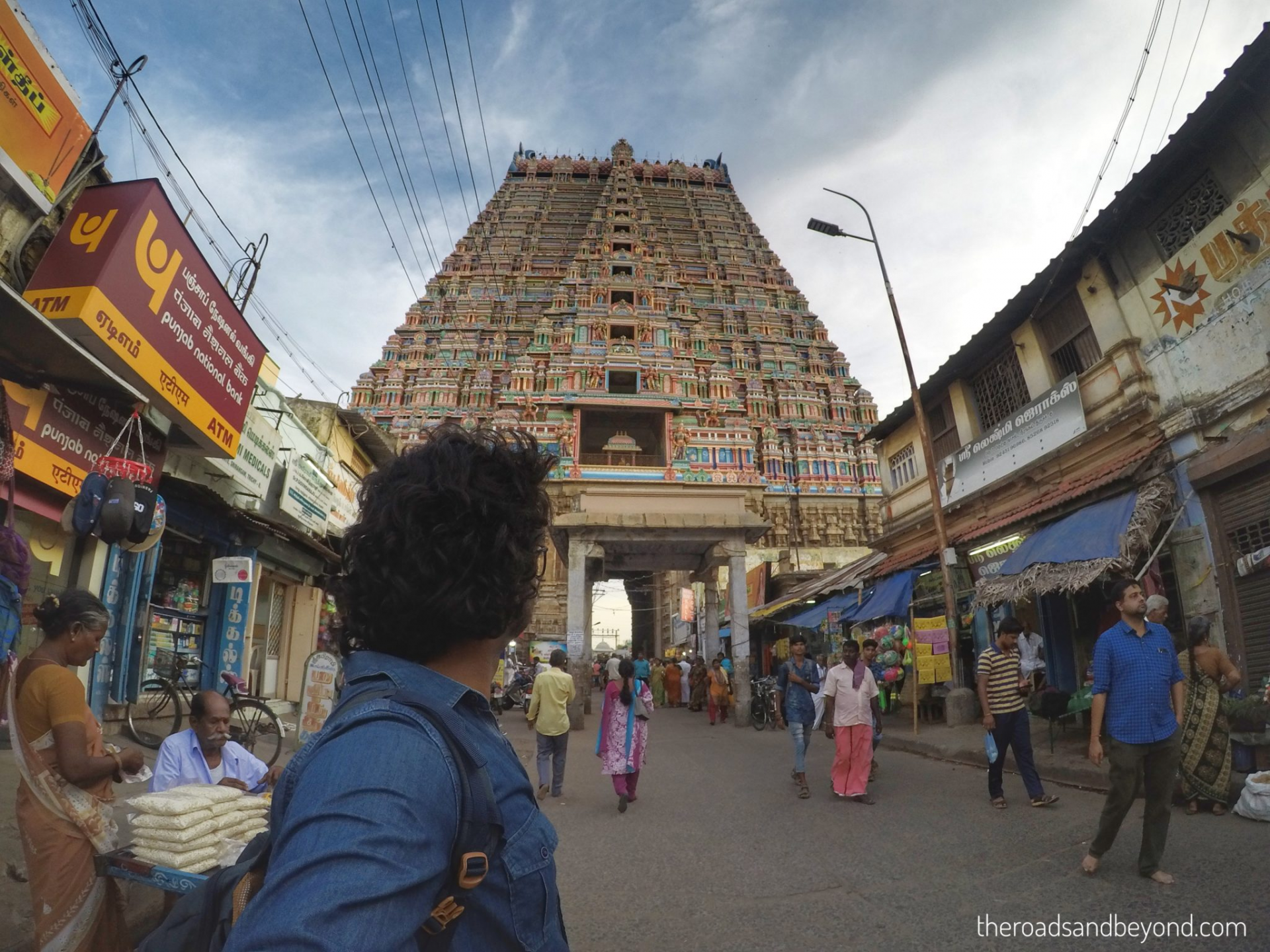 |
| Photo: Sri Ranganathaswami Temple - The roads and beyond |
Name: Sri Ranganathaswamy Temple
Architectural style: Dravidian architecture
Area: 63 hectares
Year of construction: AD 894
Country: India
The Sri Ranganathaswamy Temple is a Hindu temple in Srirangam, Tiruchirapalli, Tamil Nadu, India, dedicated to Ranganatha, a form of the Supreme God Maha Vishnu. Constructed in the Dravidian architectural style, the temple is praised by the Alvars in their Divya Prabhanda as the most important of the 108 Divya Desams dedicated to Vishnu, the Supreme God.
Srirangpatna was known as Srirangapuri in ancient times. The town is an island enclosed by the Cauvery River. This city contains the Sri Ranganatha temple. Other small temples include Sri Lakshmi Narasimha, Sri Gangadereshwara, Sri Jyothirmaheshwara, and others. Sri Ranganatha's temple is the most important among them. The inner apartment of Sri Ranganatha temple was constructed in 817 CE by a woman named Hambi of the dancers' class in 894 CE.
It is one of the most famous Vaishnava temples in South India, steeped in myth and history. Beginning with the 11th-century careers of Ramanuja, Nathamuni, and Yamunacharya in Srirangam, the temple has played a significant role in Vaishnavism's history. Its location, on an island between the Kollidam and Kaveri rivers, makes it susceptible to flooding as well as repeated occupation by invading armies. The temple was looted and destroyed by the Delhi Sultanate armies in a broad plunder raid on various cities of the Pandyan kingdom in early 14th century. In the 16th and 17th centuries, the site was fortified and expanded with numerous additional Gopurams. The temple was rebuilt in the late 14th century. It was one of the centers of the early Bhakti movement, with a devotional singing and dancing tradition, but this tradition ceased in the 14th century and was revived in a limited fashion centuries later.
Its 155-acre (63-hectare) size, 81 shrines, 21 towers, 39 pavilions, and numerous water tanks make it the largest Hindu temple in the world. The temple town is an important archaeological and epigraphical site, providing a glimpse into the early and mid-medieval society and culture of South India. Numerous inscriptions indicate that this Hindu temple served not only as a spiritual center but also as a major economic and charitable institution that operated education and hospital facilities, ran a free kitchen, and financed regional infrastructure projects with the donations it received.
1. Angkor Wat (Cambodia)
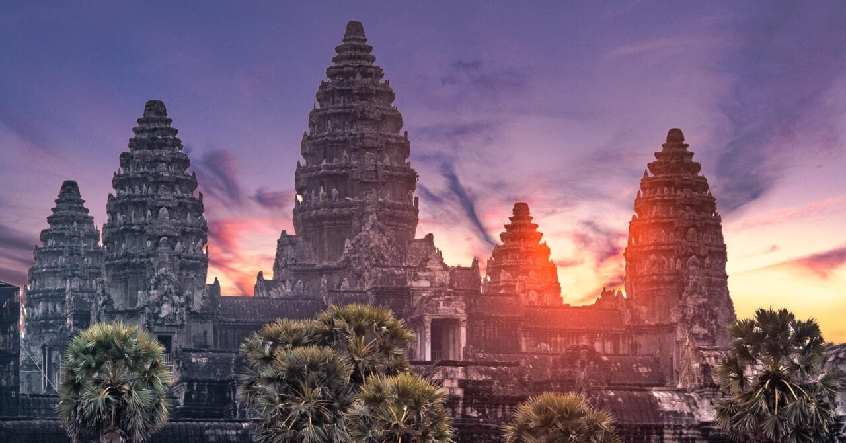 |
| Angkor Wat - Photo: Getty Images |
Name: Prasat Angkor Wat
Architectural style: Khmer
Area: 500 acres
Year of construction: late 12th century
Country: Cambodia
Spanning across a wide acreage of 500 acres, the Angkor Wat temple complex in Cambodia is the largest religious structure in the world. It is a UNESCO world heritage site and Cambodian landmark. The Angkor Wat includes of hundreds of stone temples and relics of the Khmer civilization. In the 12th century, the Khmer king Suryavarman II erected the biggest temple complex. Angkor Wat was originally devoted to Lord Vishnu, but it was eventually converted into a Buddhist temple.
In contrast to other Hindu temples, Angkor Wat faces west. Archaeologists think that Angkor Wat is not just a temple but also a mausoleum. The skilled workmen of Saurvarman solely employed sandstones as principal material for the construction of the largest holy structure. The Angkor Wat is essentially a representation of sacred mountain mount Meru. The temple's central tower is 65 meters tall and is encircled by four smaller towers.
On the West side of Angkor Wat's main gate are elaborate sculptures and carvings. There is also a sandstone statue of Lord Vishnu measuring 3.2 meters in height. Angkor Wat's core complex is a three-story edifice.
There are three primary galleries in the temple's core compound. Each gallery also includes a lotus-bud shaped tower. The gallery of thousands Buddha houses hundreds of images of Lord Buddha. The interior wall of Angkor Wat is also embellished with major scenes from Hindu epics Ramayana and Mahabharata.
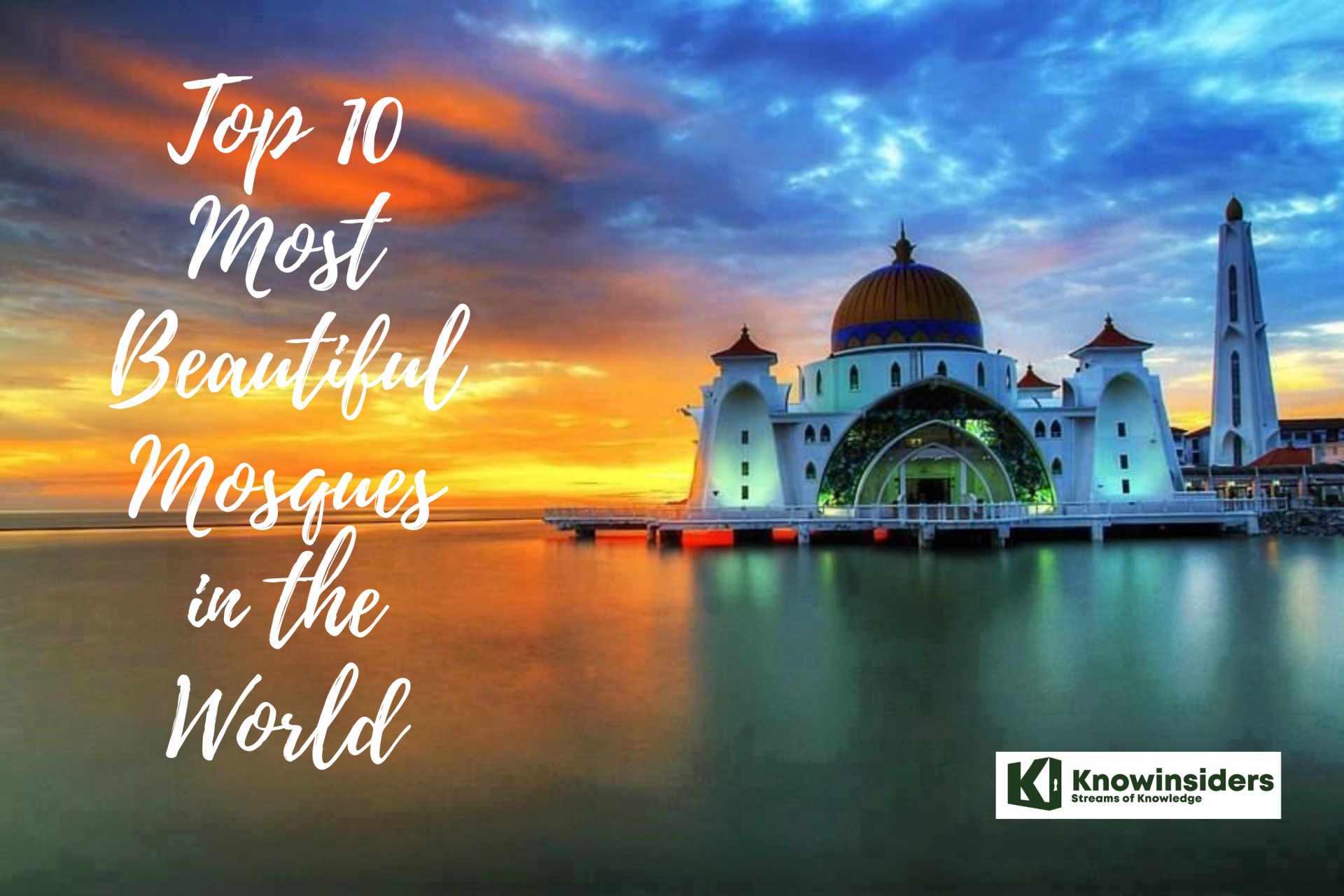 Top 10 Most Beautiful Mosques in the World Top 10 Most Beautiful Mosques in the World Mosques have existed for more than a millennium as places of worship for Muslims all around the world. Check out the 10 most beautiful mosque ... |
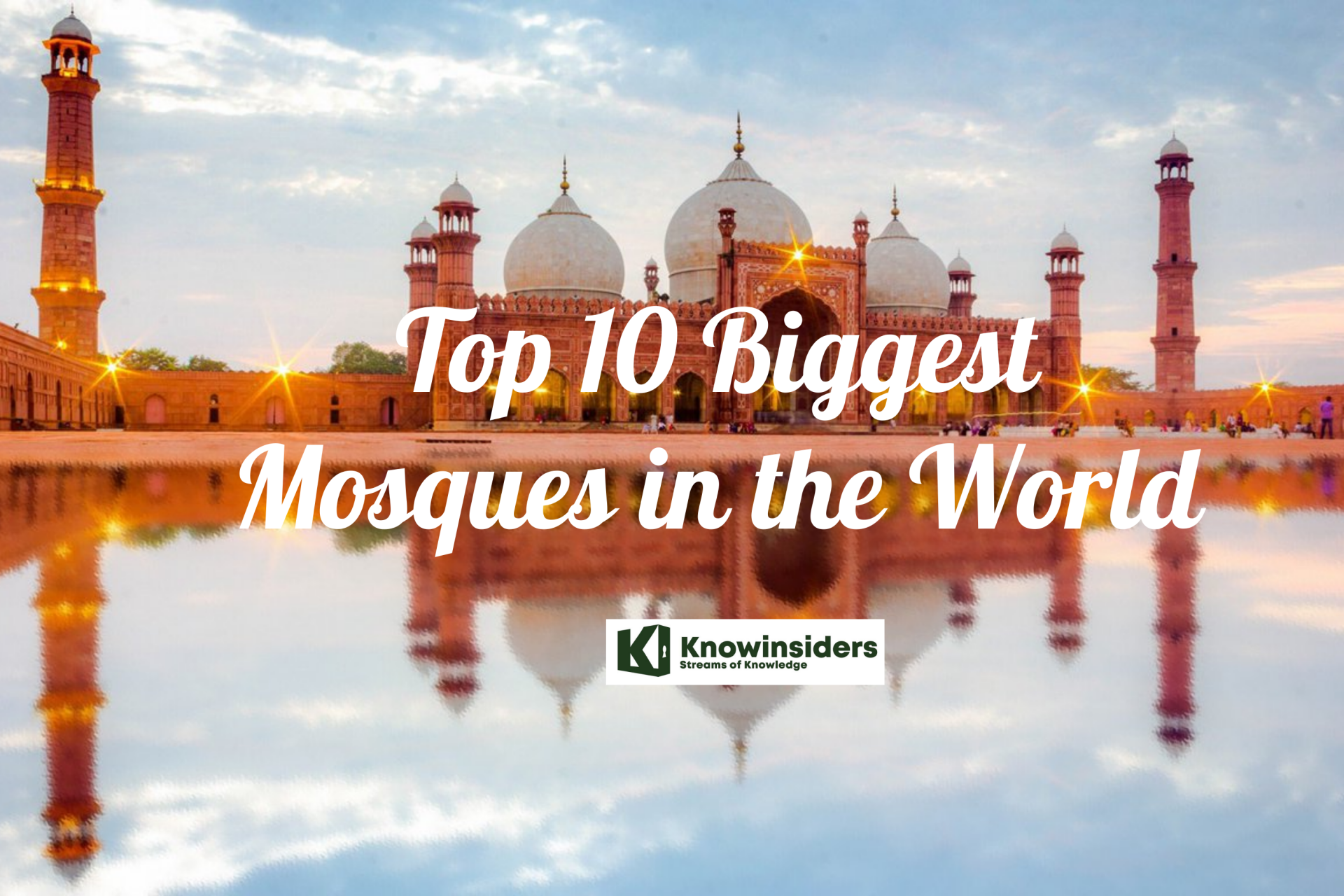 Top 10 Biggest Mosques in the World Top 10 Biggest Mosques in the World With each of the mosques possessing their own merits, mosques often make an especially powerful statement. Check out the list of 10 biggest mosques depending ... |
 Top 10 Astonishing and Beautiful Lakes in Europe Top 10 Astonishing and Beautiful Lakes in Europe Eager to know what are the most astonishing lakes in Europe? Check out the list of the 10 most beautiful lakes in Europe right below! |
 Top 10 Most Beautiful Mountain Towns in Europe Top 10 Most Beautiful Mountain Towns in Europe Being surrounded by mountains can enhance the beauty of just about any town. Check out the list of 10 most beautiful mountain town in Europe ... |























